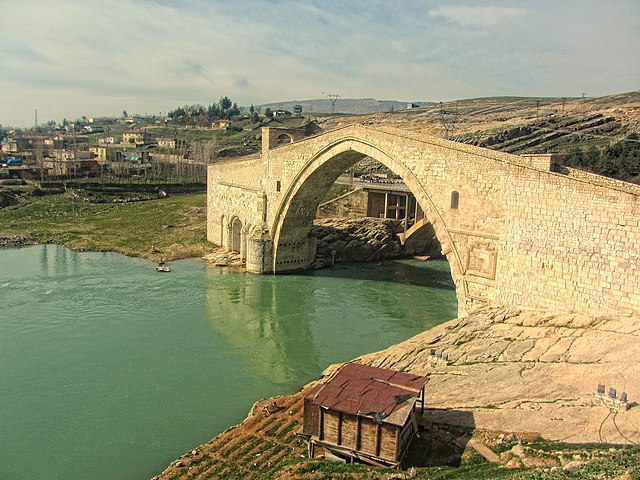Husam al-Din Timurtash was an Artuqid emir of Mardin (1122–1154) and ruler of Aleppo (1124–1125).
Coinage of Husam al-Din Timurtash. Diademed, Seleukid-style bust right. Name and titles of Timurtash in four lines and in margins.
The historic Malabadi Bridge was built by Husam al-Din Timurtash.
“Sign of Sagittarius” by al-Sufi in his book Ṣuwar al-kawākib al-thābita, Artuqid Mardin, 1131 CE.
The Artuqid dynasty was established in 1102 as an Anatolian Beylik (Principality) of the Seljuk Empire. It formed a Turkoman dynasty rooted in the Oghuz Döğer tribe, and followed the Sunni Muslim faith. It ruled in eastern Anatolia, Northern Syria and Northern Iraq in the eleventh through thirteenth centuries. The Artuqid dynasty took its name from its founder, Artuk Bey, who was of the Döger branch of the Oghuz Turks and ruled one of the Turkmen beyliks of the Seljuk Empire. Artuk's sons and descendants ruled the three branches in the region: Sökmen's descendants ruled the region around Hasankeyf between 1102 and 1231; Ilghazi's branch ruled from Mardin and Mayyafariqin between 1106 and 1186 and Aleppo from 1117–1128; and the Harput line starting in 1112 under the Sökmen branch, and was independent between 1185 and 1233.
City walls of Diyarbakır.
The "Sheikh" of Diyarbakır in Turkic dress, wearing the sharbūsh with tall cap. Painted in Amid, modern-day Diyarbakır, Turkey, ca. 1200–1210, probably Artukid (Maqamat al-Hariri, BNF Arabe 3929).
Malabadi Bridge was built by the Artuqids.
Magic Mirror of Abu-l-Fadl Artuq Shah of Harput, Eastern Anatolia, ca. 1220-30, David Collection. It is "representative of medieval Islamic examples of the “Chinese” type".






